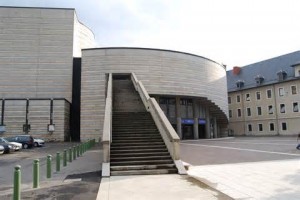One of our work lead on sustainable buildings is indoor environmental quality. It refers to the health and wellbeing of those who occupy space within building. Many factor can define indoor environmental quality such as lighting, acoustic and the one we choose to focus on is indoor air quality.
There is no secret for anyone any more : the air within buildings can be more seriously polluted than the outdoor air. We spent 2 days of training with the company Medieco. Created in 1986, Medieco is specialised on Health within buildings. It provides training and consulting on indoor air quality for material and building stakeholders. Rhone-alpes’ partners asked Medieco for a specific training on indoor air quality and we invited Mountee pilote projects stakeholders : territory representatives and project managers.
Here is a short feedback of our training.
First of all, indoor air quality is a major public health issue as we typically spend 80% of our time indoors. In France, a study evaluates at 19 billion Euros the social cost of only six indoor pollutants!
Four main sources are responsible for indoor air pollution : 1/ outdoor air 2/ subsoil, basement 3/ building material and furnitures 4/ users activities.Locating the source of pollutant allows to define crucial steps during building lifetime :
- Program :
- analyse site weakness and strength : soil, vegetation, existing infrastructure and equipment, prevailing wind…
- define health objectives as a state of complete physical, mental and social well-being,
- prepare indoor air quality commissioning.
- Conception : Environmental quality assessment of materials, plans and equipments (especially ventilation)
- Construction : Raise awareness of construction and renovation companies. Make sure to achieve a proper implementation of the products and materials (drying time for example).
- Handover should focus on monitoring solutions, ventilation assessment (flow, balancing, pressure) and maintenance contracts. Medieco recommends an initial assessment before using the building in order to create an original state.
- Exploitation : Air quality can be assess by asking for users satisfaction and measurement campaign.
Medieco will step in at least two mountee pilot project :
- one is already in exploitation phase. Some measurement will be done in order to assess initial state and to improve it
- The other pilot will be in conception phase. Recommandation on conception documents will be made.
Our goal is to reach a very good indoor air quality in every public buildings in the next years, specially in buildings used by children. Let’s do it!
Etienne Vienot (RAEE)
I am project manager in charge of european projects at the regional energy agency of Rhône-Alpes.

















